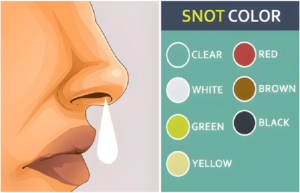Navigating Motrin Dosing for Kids: A Parent’s Guide to Safe and Effective Pain Relief

When your child is in pain, it’s only natural for parents to want to provide quick relief. One commonly used over-the-counter medication for children is Motrin, which contains the active ingredient ibuprofen. In this article, we’ll explore the safe and effective use of Motrin for kids, from understanding its uses to proper dosing and potential side effects.
The Role of Motrin in Pain and Fever Management
Motrin, or generic ibuprofen, is a nonsteroidal anti-inflammatory drug (NSAID) that can help relieve pain and reduce fever. It works by inhibiting enzymes that produce prostaglandins, substances in the body responsible for inflammation and pain. Motrin is often used to alleviate the discomfort associated with various conditions, including teething, headaches, colds, flu, and other illnesses that may cause fever or discomfort.
Consultation with a Healthcare Professional
Before administering Motrin to your child, it is crucial to consult with a healthcare professional, such as a pediatrician or family doctor. They can provide guidance on whether Motrin is appropriate for your child’s specific condition and recommend the appropriate dosage. Your healthcare provider can also help you determine whether there are any contraindications, potential drug interactions, or underlying health conditions that could affect the use of Motrin.
Age and Weight Considerations
The correct Motrin dosage for your child depends on their age and weight. The medication is typically administered in liquid form or as chewable tablets, making it easier to adjust the dose according to your child’s specific needs. Always follow the dosing instructions on the product packaging or your healthcare provider’s recommendations to ensure your child’s safety.
Here is the Motrin Dosing Chart
Dosage Guidelines
The following are general guidelines for Motrin dosing for children:
Infants under 6 months: It’s essential to consult a healthcare provider before giving Motrin to infants this young. They may recommend an alternative medication or provide precise dosing instructions.
Children 6 months to 2 years: The typical dosage is 50 mg (1.25 mL of the liquid form) every 6-8 hours as needed. Do not exceed four doses in 24 hours.
Children 2-12 years: The dose may vary depending on the child’s weight. Generally, the recommended dosage is 10 mg/kg of body weight every 6-8 hours as needed. However, it is crucial to consult with a healthcare provider for precise dosing instructions.
Children over 12 years: They can take the adult dosage as indicated on the product packaging, typically 200 mg every 4-6 hours as needed. Consult with a healthcare provider for guidance if your child falls into this age range.
Safety and Side Effects
While Motrin is generally safe when used correctly, it’s crucial to be aware of potential side effects. These may include upset stomach, diarrhea, and in rare cases, allergic reactions. If you notice any unusual symptoms or adverse reactions, discontinue use and consult a healthcare provider immediately.
Conclusion
Motrin can be a valuable tool for parents seeking to alleviate their child’s pain and discomfort. However, it should be used with caution and only after consulting a healthcare provider. Follow proper dosing guidelines based on age and weight, and be vigilant for any potential side effects. Your child’s health and well-being should always be the top priority, and Motrin can play a part in their comfort and recovery when used responsibly.





